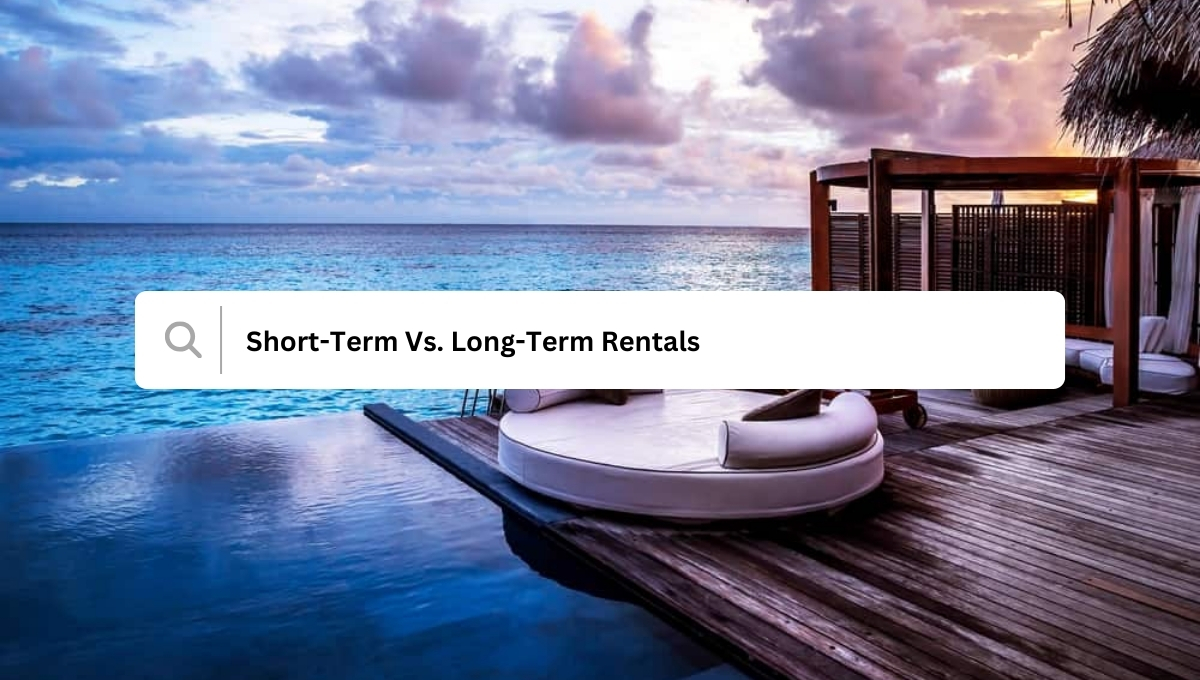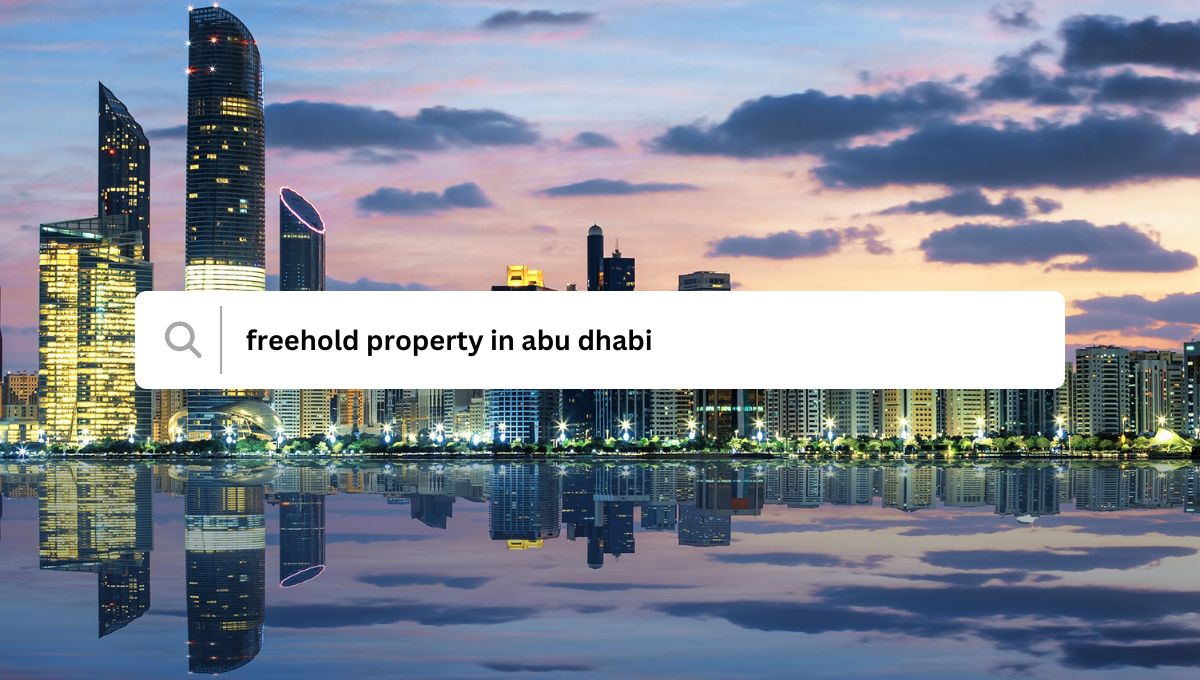Trending Projects That You might like:
As a property owner in Dubai, you likely aim to generate the best possible return on investment (ROI) from the Dubai property market. One major decision you face is whether to rent out your property on a short-term or long-term basis.
Both leasing strategies have pros, cons, and ROI implications in Dubai’s fast-moving real estate market. Carefully weighing all the factors can lead to the ideal rental strategy to maximize your recurring income.
In this comprehensive guide, we’ll compare short-term rentals versus long-term leases in the Dubai real estate market across key factors like
- Rental yields
- Occupancy rates,
- Rental expenses,
- Legal Requirements,
- Management needs We’ll also provide tips to help you determine the best rental approach based on your property details and investment goals.
By the end, you’ll have the complete picture to select the optimal leasing strategy and become a savvy landlord in Dubai!
Overview of the Rental Property Market in Dubai
Before diving into the specifics of short versus long-term rentals, let’s set the stage by reviewing a few key facts about Dubai’s real estate investment scene:
- Dubai has a strong property ownership and investment culture among UAE nationals and expatriates. The market offers high-quality properties with attractive yields.
- As Dubai is a major global business and tourism hub, people continue flocking there. This fuels strong, year-round demand for rental accommodation.
- Dubai’s population is expected to reach 5.8 million by 2040. Ongoing major developments across the emirate will further feed rental housing needs.
- Property prices in Dubai have corrected nearly 30% from their 2014 peak. But rents have proved more resilient, declining only 10-15% in the same period.
- Dubai saw 42,000 new residential units completed in 2022, adding to the rental supply pool. But demand remains robust enough to absorb and require even more rental stock looking ahead.
Key Takeaway – With sound property fundamentals and expected population/economic growth, Dubai offers attractive real estate investment opportunities for rental income seekers.
Now, let’s explore two popular rental models to capitalize on this growing market as a landlord.
Short-Term Rentals in Dubai Short-term rentals refer to leasing out a property for less than 1 year. This is a great way to cater to Dubai’s large tourist and business traveler population seeking temporary furnished apartments.
Here’s a closer look at how short-term holiday rentals in Dubai work and their upside for rental investors:
Who Uses Short-Term Rentals in Dubai?
There are several target customer segments that frequently use short-term rental apartments in Dubai:
- Tourists – Dubai receives nearly 16 million visitors per year. Tourists seek comfortable holiday homes and apartments across Dubai during trips averaging 3-5 nights.
- Business travelers – Many professionals fly in for short work trips, trade shows, corporate projects, etc. They prefer spacious, upscale short-term flats over cramped hotel rooms.
- New expats – Newly arriving ex-pats often stay in temporary furnished flats while searching for long-term accommodation.
- Interim housing – Existing Dubai residents relocating to new homes use interim short-term units during their move.
- Special projects – Some corporate/institutional clients require a few short-term residential units for sporting events, conferences, film shoots, etc. So, you can see a vast, multi-faceted demand for short-term rentals in Dubai year-round. As a landlord, you can position your property to benefit from this lucrative market segment.
Short-Term Rental Locations in Dubai
If maximizing rental yields is your top priority, short-term leases tend to provide higher returns across Dubai’s prime locations. But you still need to be strategic with property selection.
The very best areas for short-term rentals in Dubai have:
- High tourism and hospitality activity
- Shopping, dining, and entertainment options
- Accessibility via public transport
- Community amenities like pools, gyms, and parks Based on these criteria, the top locations for short-term leases in Dubai include:
Dubai Marina
As one of New Dubai’s most popular neighborhoods, Dubai Marina attracts travelers with its bustling walkable promenade lined with restaurants alongside glistening skyrise views. High yields for short-term rentals:
- Studios: 8-10% gross yields
- 1 bed: 7-9%
- 2 bed: 6-8%
Downtown Dubai
Encompassing the world’s tallest building amongst other architectural icons, Downtown Dubai entices luxury travelers in particular. Prime yields:
- Studios & 1 beds: 6-10%
- 2 beds: 5-7%
- 3+ beds (larger units): 4-6%
Palm Jumeirah
Palm Jumeirah – This man-made island development houses beachfront resorts and high-end amenities, with amazing yields even for freehold units:
- Studios & 1 beds: 8-12%
- 2 beds: 6-10%
- 3+ beds: 5-8%
Dubai Marina Walk & JBR Beach
For visitors and younger expat crowds, the bustling waterfront strips of Dubai Marina and JBR Beach can’t be beat for location. Typical yields:
- Studios: 8-12%
- 1 bed: 7-10%
- 2 bed: 6-9%
Short-Term Rental Rates in Dubai
To gauge income potential, let’s examine average short-term rental rates across Dubai:
Daily rents for short-term apartments in prime areas:
- Studios – AED 500-800
- 1-bed – AED 600-1,200
- 2-bed – AED 800-1,800
Weekly rental rates:
- Studios – AED 2,500-5,000
- 1-bed – AED 3,500-7,000
- 2-bed – AED 5,000-10,000
Monthly short-term rents:
- Studios – AED 8,000-13,000
- 1-bed – AED 12,000-18,000
- 2-bed – AED 18,000-30,000 So you can achieve elevated rents from tourists and business visitors seeking short-term housing in Dubai. Rates climb higher during peak seasons like winter holidays, summer vacations, Ramadan, major festivals, and big conventions/expos.
Long-Term Rentals in Dubai
Long-term rentals refer to traditional 1-to-2-year leases for unfurnished properties aimed at UAE residents. As a landlord, you sign an annual contract with tenants who reside more permanently in your property as their home.
Here’s a snapshot of Dubai’s long-term rental market:
Long-Term Rental Tenants in Dubai Typical long-term tenants in Dubai seeking 1-to-2-year leases fall into three buckets:
1. Expat professionals
Skilled expat workers across fields like banking, tech, media, healthcare and more. Typically, they are middle- to higher-income couples/families.
2. Western/Arab expats,
Arab families from the GCC region and Westerners working locally or handling regional business roles. Drawn by Dubai’s safe, high-quality living.
3. UAE nationals
Emirati families comprise a portion of longer-term tenants as secondary homes or investment properties.
Schools, transportation, amenities, and community events also play a key role in neighborhood selection for families signing annual leases.
Top Areas for Long-Term Rentals
Long-term leases to Dubai residents don’t offer the same short-term yield possibilities. However, annual rental incomes are stable, especially in the most affordable areas for families and professionals to reside long-term.
The best areas for long-term rentals in Dubai feature:
- Family-friendly communities
- Easy access to schools and shops
- Balance of amenities and affordability
- Commuter access to business districts
Top locations for long-term leases include
Dubai Silicon Oasis
With tech firms like Microsoft located here alongside newer apartment towers, Dubai Silicon Oasis caters to young professionals seeking affordable living. Typical gross yields:
- Studios & 1 beds: 7-8%
- 2 beds: 6-7%
International City
Known for budget property prices, International City allows tenants to share accommodation and save costs in Dubai. Yields:
- Studios: 6-8%
- 1 bed: 5-7%
- 2 bed: 4-6%
JVC (Jumeirah Village Circle)
JVC has rapidly grown into a large community with Dubai residents attracted to its affordability and proximity to new retail/dining options. Yields:
- 1 bed: 6-8%
- 2 bed: 5-7%
Dubailand
With freehold options that appeal to families on mid-range budgets, different parts of vast Dubailand development continue to see rental demand. Yields:
- 3-bed townhouses/villas: 4-6%
Average Long-Term Rental Rates in Dubai
Unlike short-term furnished units, landlords typically quote long-term Dubai rental rates per year. Expect the following average annual rents for popular apartment configurations:
- Studios – AED 40,000-75,000
- 1-bed – AED 60,000-110,000
- 2-bed – AED 90,000-160,000
- 3-bed – AED 120,000-250,000
For multi-bedroom villas/townhouses, average yearly asking rents are:
- 3-bed – AED 140,000-220,000
- 4-bed – AED 160,000-280,000
- 5-bed – AED 240,000-500,000 So you still earn very healthy rental incomes from long-term leases catering to Dubai’s sizable resident expat/Emirati tenant pool.
Now that we’ve set the scene on both rental models let’s dive deeper into their comparative pros and cons and financial returns for landlords.
Short-Term vs. Long-Term Rentals in Dubai – Which Is Better for Landlords?
We’ve examined the basics of short and long-term rentals in Dubai – now let’s directly compare them across the metrics most vital for buy-to-lease investors:
Rental Yields
Occupancy Rates
Expenses & Maintenance
Laws & Regulations
Management Needs
Analyzing these key factors will help determine which model earns you greater returns as a Dubai landlord trying to maximize rental income:
1. Rental Yields – Who Wins?
The most crucial factor is rental yield, i.e., annual rent earned relative to your property price.
All else being equal, higher yields indicate a better rental return on investment.
Let’s see the average yields landlords can achieve across different Dubai apartment types for short versus long-term leasing:
Short-Term Lease Yields
Property Value Annual Rent Yield AED 1M AED 100-130K 10-13%
Assumptions
- 50-65% annual occupancy
- AED 500-800 avg daily rate
Long-Term Lease Yields
Property Value Annual Rent Yield AED 1M AED 60-75K 6-7.5%
Assumptions
- Close to 100% annual occupancy
- AED 5,000-6,250 monthly rent Short-Term Rental Yield Advantage = +3-5%
Clearly, short-term rentals in Dubai generate much higher yields owing to the elevated nightly/weekly pricing one can charge tourists and business visitors.
Landlords earn +3-5% extra in net yields from short-term units despite ~30% lower occupancy, seriously affecting the bottom line over a property’s lifespan.
Savvy investors specifically buy properties in the Dubai real estate market suited for short lets to capture these outsized yields.
Key Takeaway – When optimally executed, short-term rentals beat longer-term leases in generating maximum rental yields for landlords in Dubai.
2. Occupancy Rates – Any Differences?
The next key question is occupancy rates achieved. Maximizing tenant-occupied days directly boosts your annual rental income.
Dubai short-term rentals for tourists/business visitors see more volatility in occupancy over the year based on tourism/corporate travel cycles.
Seasonality also impacts rates, e.g., daily rents climb 30-50% in peak winter and summer periods but decline in shoulder months.
That said, data shows average annual occupancy rates of 50-65% for well-run Dubai holiday homes catering to strong tourism and business flows.
Occupancy can stretch higher (~75%) for exceptional short-term units in premium spots or fully managed via online portals like Airbnb.
Conversely, long-term rental occupancy is 85-95%+, given resident families sign 1-to-2-year leases. Tenant rollover friction is low, and residents often renew contracts in the same unit for several years.
Key Takeaway – Long-term leases enjoy 10-20% higher occupancy than short-term furnished units. But the yield upside still favors holiday lets for savvy Dubai landlords.
3. Expenses & Maintenance
A third key factor is expenses. Landlords must consider both property expenses and the costs of managing each rental model.
On the expense front, short-term units certainly involve more operating costs.
Furnishing an apartment or villa to luxury hospitality standards carries a significant upfront capex of AED 50,000-150,000+. Minor redecoration is also required to keep units fresh as consumer tastes evolve.
Replacing broken appliances, electronics, furniture, etc, from wear-and-tear or mishandling can rack up expenses over time.
Operating expenses like cooling, cleaning, etc also climb with more tenant turnover.
Prudent landlords buffer expenses via added premiums in short-term nightly/weekly pricing to protect their ROI.
Operating costs are significantly lower for long-term unfurnished units without furnishings/decor. Still, expect regular appliance/household system repairs and repainting costs between tenant cycles.
Key Takeaway – Short-term rentals entail higher expenses/management costs but still provide better net yields for diligent Dubai investors.
4. Laws & Regulations
Both Dubai rental models have regulatory nuances worth noting:
Short-Term Laws
Per Dubai laws, landlord-owned properties in freehold areas (like Dubai Marina, Downtown Dubai, Palm Jumeirah, etc) have no restrictions on minimum stay durations.
So investors can legally lease short-term without permits. But short-term rentals under 30 days in non-freehold areas require Dubai Tourism commercial licenses.
Those renting out multiple short-term properties must also register with the DTCM. Overall, pretty light regulations exist around direct landlord shortlets to tourists in Dubai.
Third parties like Airbnb face more complex license/tenancy contract requirements for home-sharing rentals.
Long-Term Laws
The Rental Dispute Settlement Centre (RDC) oversees Dubai’s long-term rental market governing landlord-tenant disputes.
Landlords must honor the full leased term, locking in tenants (typically 1 year). Rental increases are capped at 10% when renewing fixed-term contracts.
Evicting tenants without cause is illegal even after the contract period. So, more friction exists when issues arise with long-term occupants. Key Takeaway – Outside a few locale constraints, Dubai imposes minimal red tape on landlords offering short-term furnished rentals. More complexity arises around long-term tenancy rules.
5. Management Needs
The last crucial consideration is operational management. Properly running your property is vital to maximize rents and occupancy.
Short-term units require extensive day-to-day oversight like rate management, digital marketing, guest communications, check-ins/outs, cleaning, restocking supplies etc. Most real estate investors hire specialized companies charging 25-30% commission.
Landlords handle basic advertising/tenant sourcing and fund repairs for long-term properties. But hands-on oversight needs are minimal, with residents staying 1-to-2+ years.
Many buyers also hire an asset manager charging 8-10% of annual rent. They handle tenant Networking, screen/contract tenants, fund/oversee repairs, collect rents, etc.
Key Takeaway – Holiday homes require heavy day-to-day management. But specialized companies now enable smooth short-term rental execution at scale.
Which Rental Model Should Dubai Landlords Choose?
We’ve now covered all the key factors differentiating short versus long term rentals for Dubai real estate investors targeting income generation.
The decision matrix has many interplaying variables – but some core principles emerge:
1. Optimizing yields is crucial
At its core, real estate investment is about maximizing recurring cash yields. On that metric, short-term furnished rentals outperform plain long-term leasing in Dubai by 3-5%+ yield based on achievable rates.
That delta seriously impacts net returns over an investment holding period of 10 to 20+ years. So maximizing yields should be central to any rental strategy.
2. Target property features matching demand
Not all properties suit short or long-term leasing ideals equally. Investors must cherry-pick units with features catering to each model’s tenant profile.
New high-quality buildings in tourism hotspots are key for holiday rentals in Dubai. For long-term residents, community, schools, and transport access grow more important along with unit size.
3. Hire specialized management
Proper third-party management is almost mandatory to successfully run short-term units for out-of-town guests. This enables the optimization of dynamic pricing, digital visibility, centralized bookings, and concierge-grade hospitality service.
Even long-term units warrant at least an asset manager to liaise with tenants and oversee property upkeep between occupancies. Seek specialists like UpperKey.
4. Weigh overall objectives
Investors must weigh their larger strategic rental goals beyond purely maximizing recurring income. Relevant questions include:
- What property types best match my desired tenant profiles? Tourists or residents?
- How much direct oversight am I willing/able to handle myself?
- What policy changes or market shifts could impact each model differently in the long term? Factor Short-Term Rentals Long-Term Rentals Typical lease duration Daily, weekly, monthly (under 1 year) Annual contracts (renewable) Furnishing Fully or partially furnished Usually unfurnished Tenant type Tourists, business travelers, temporary expats Dubai residents Management required High – meet guests, cleaning, maintenance Low – mainly renewals & payments Legal framework Regulated under DTCM Regulated under RDC Rental yields Higher but more variables Lower but steady incomes The ideal rental model aligns with an investor’s targeted tenant segments, allowable expenses, and capacity to handle management duties. It also blends smoothly into their overall portfolio.
5. Consider mixing models
Savvy Dubai investors often deploy a mixed short/long rental portfolio strategy across their properties.
For example, an investor might…
Lease out a few multi-bed townhouses on annual contracts to maximize occupancy Rent luxury branded apartments short-term to foreign visitors at premium rates This blended approach allows capturing upside from both models. The mix depends on an investor’s risk tolerance and portfolio construction approach.
How to Calculate Expected Rental Yields in Dubai
To decide if short or long-term rentals make better financial sense for your Dubai investment property, you need to calculate potential yields to estimate your return on investment (ROI).
Review the math:
Gross Rental Yield
Your gross rental yield is the annual rental income divided by total property price or value.
Formula: Gross Rental Yield = (Annual Rent / Property Price) x 100
Let’s say you purchase a 2-bed flat in JBR for AED 2 million. If comparable units rent for AED 140,000 per year, your gross yield is:
Gross Yield = (140,000 / 2,000,000) x 100 = 7% For short-term rentals, estimate total annual income accounting for seasonal occupancy changes.
Net Rental Yield
To calculate your net return, deduct expenses from the gross yield. Typical costs are:
- Property management fees
- Utilities – may be covered in the contract
- Commission (if using agency)
- Owners association charges
- Repair & maintenance fund
- Vacancy periods
Formula:
Net Rental Yield = Gross Yield – Expenses
If we subtract 25% expenses from our 7% gross yield above, we get an estimated net yield of 5.25% for the imaginary JBR flat.
Aim for the highest possible net yield based on market rates in your area and property type.
Short-term furnished units tend to achieve greater net yields, but long-term unfurnished rentals have lower associated expenses.
Wrapping Up
Deciding between short vs long-term rentals depends greatly on your lifestyle goals and desired involvement as a Dubai landlord.
If you seek maximum returns and don’t mind actively operating units, short-term furnished rentals provide unmatched income potential, targeting Dubai’s tourism sector. Just be prepared to invest effort into management.
Long-term unfurnished units leased to residents offer steadier (if lower) annual yields for more passive income with less hassle.
Either route can prove financially rewarding as part of a diversified Dubai property investment portfolio. Just be sure to make informed location choices and target healthy rents by monitoring comparable listings using TopLuxuryProperty.com.
Stay tuned to our blog for more Dubai real estate tips and insights!



_638576011273323995_820465_.jpg)


